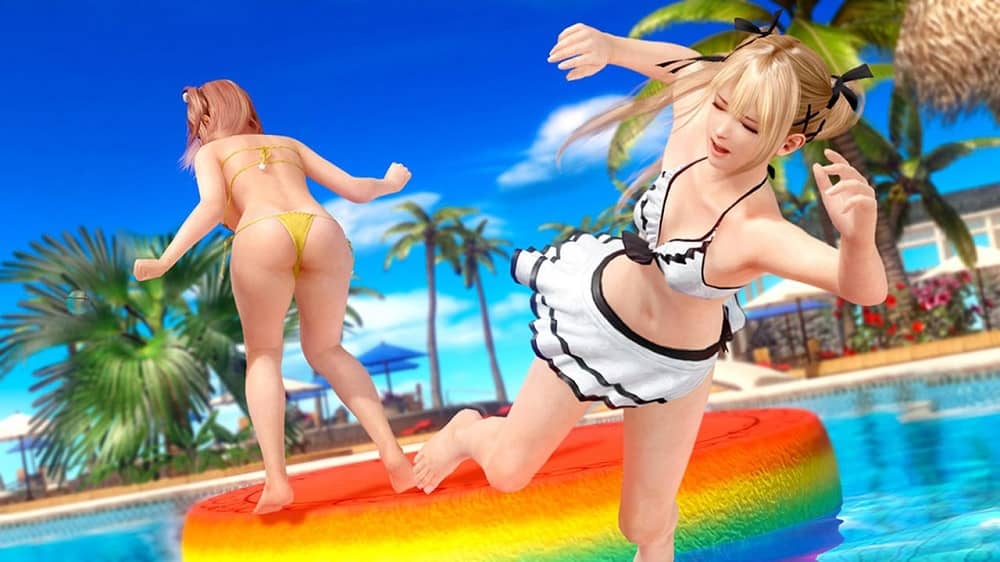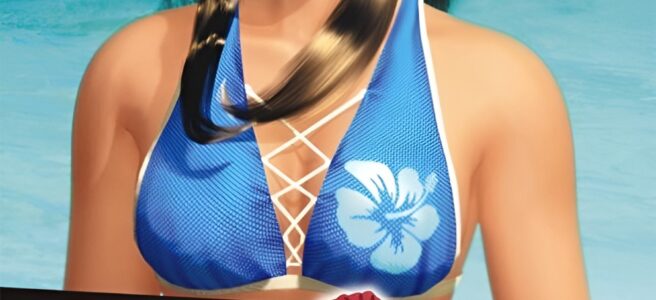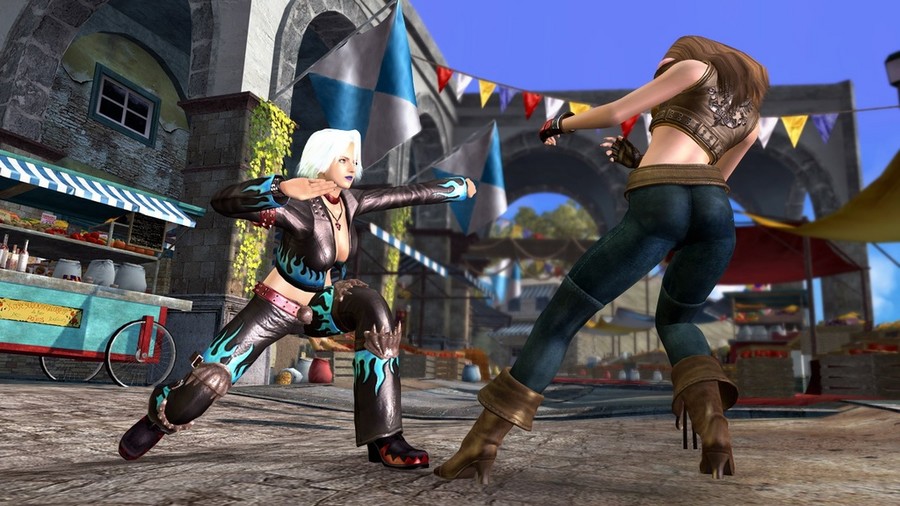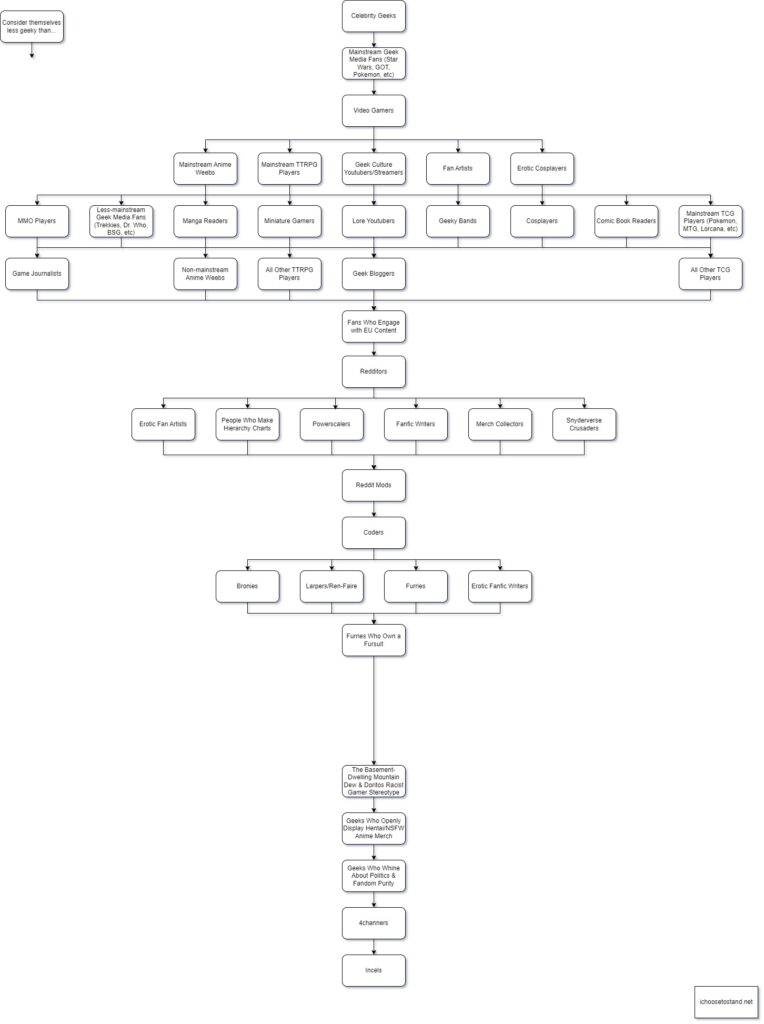Lately, I’ve been seeing people on social media posting Topsters lists of their favourite video games, which has gotten me thinking about the topic. It got to the point where I put together my own quick-and-dirty list on Bluesky, but that didn’t really leave me all that satisfied. You see, for about twenty years now I’ve been using IMDb to track and rate every movie I’ve seen in that time. It’s actually been pretty useful for me, and I can easily look back and get a rough idea of what movies I’ve seen and what my thoughts were on them. This put me on a journey to try to do the same for every video game I’ve ever owned and/or played, which led me to a site called Backloggd. Having spent a couple weeks recounting every game I can remember playing, I’ve now got a big list of nearly four hundred games I’ve played (four hundred!? GOOD GOD). That’s a big enough library that I can legitimately put together a top one hundred games of all time list… so why not do just that?
A few notes before we start: first, I’m not going to include compilations here (so no Master Chief Collection, Tetris & Dr. Mario, Super Mario All-Stars, Metal Gear Solid HD Collection, etc). The upper-echelons of the list would probably be dominated by compilations, and that just doesn’t feel fair to the legacies of the individual games. Secondly, I’m not going to make this “one game per franchise” like I would if this were, say, a top twenty-five. If your franchise is good enough to get multiple entries, then you’ll get that representation (although a sequel that basically invalidates its predecessor’s existence will likely push prior entries off the list entirely). Thirdly, this is wildly subjective and, by its nature, only based on the games that I’ve actually played. As a result, I guarantee you that I have not played some all-time classic that you love. Please tell me how much you hate me for not including it down in the comments below.
Got it? Let’s get onto the list then…
100. Echochrome (2008, PSP)

A fun, quirky, minimalist little puzzle game on PSP where you have to rotate a 3D maze in order to change perspectives and allow a mannequin to reach the exit. Can be a bit finnicky with its controls, but it’s such a unique and striking premise that I can’t help but love it.
99. Theme Hospital (1997, PC)
This business simulation game was a blast back in the day, but what really made it stand out from the crowd was the various wacky ailments your hospital would have to treat.
98. Peter Jackon’s King Kong: The Official Game of the Movie (2005, PS2)
In the annals of licensed video games, King Kong was easily one of the best. 90% of the time it’s a tense, immersive first person shooter where you struggle to survive against the monsters of Skull Island. For a glorious 10% of the time, you turn the tables and become Kong, beating the ever-living crap out of every monster that had been harassing you up to that point. The game was also just legitimately revolutionary, pushing the boundaries of immersion, with no HUD to speak of and direct involvement from Peter Jackson himself.
97. Guacamelee! (2013, PS Vita)

A joyous, lucha libre-themed Metroidvania. I remember trying a demo of the game when I was on a vacation in Atlanta and immediately deciding that I was going to buy this game when I got back.
96. Pokémon Diamond (2006, DS)
The fourth generation of Pokemon is probably my favourite of them all (and I say this as someone who stopped at gen two and came back for gen six, so this isn’t nostalgia speaking). The physical/special split was revolutionary for the gameplay and the difficulty was legitimately challenging. Granted, Diamond makes the list largely because I have not gotten around to playing Pokemon Platinum yet. When that happens, I expect Diamond to drop off and Platinum to move higher up, as it’s generally considered vastly superior to the other two Sinnoh games.
95. Vigilante 8: Second Offense (1999, PS1)
Car combat is one of those genres which are dominated by one big franchise (Twisted Metal), and the rest are a bunch of forgettable rip-offs. Vigilante 8: Second Offense is the closest anyone ever came to stealing the crown, with its significantly better graphics and interesting innovations. Who cares about any of that though: on the Arizona stage, you can cause a meteor to strike the arena, which will send any nearby cars flying and then a giant ant comes out which attacks everyone on sight. Entire evenings were spent in our household on this one level as we blasted each other and this giant, fuck-off ant over and over again.
94. The Lord of the Rings: The Return of the King (2003, PS2)
Another Peter Jackson licensed game makes my top one hundred! The Return of the King game is a fairly simple hack ‘n slash by modern standards, but it sure is fun and miles better than it had any right being.
93. Assassin’s Creed 2 (2009, PS3)
At the time of its release, Assassin’s Creed 2 was a revolutionary experience, perfecting the half-baked formula of its predecessor, and featuring an interesting narrative with a protagonist who was surprisingly endearing. At the time, I would have easily put Assassin’s Creed 2 much higher on this list. However, only one game later, I was halfway through Brotherhood, when I suddenly found myself completely done with this series’ structure of “travel halfway across the city to your mission, then travel halfway across the city to complete the objective”. I still think Assassin’s Creed 2 is good enough to warrant a spot in the list, but oh how the mighty have fallen.
92. Freedom Fighters (2003, PS2)

Freedom Fighters is a legitimately revolutionary game for its time. It starts out as a pretty terrible third person shooter due to its wildly inaccurate weapons. However, it soon evolves into something special, as you start being able to command an ever-growing number of squadmates, until you’re eventually commanding a dozen guys into massive battles against tanks and helicopters as you attempt to liberate an occupied USA.
91. The Sims 3 (2009, PC)
I wasted way too many hours in university playing The Sims 3 that I should have been spending on homework and socializing. Oh well, it’s not like I wasn’t enjoying myself.
90. Rise of the Tomb Raider (2015, PS4)
I reviewed the first Tomb Raider reboot game back when it came out and, as much as I enjoyed it, it clearly was a bit rough around the edges. Rise of the Tomb Raider largely smoothed off the rough edges and made for a much more refined and enjoyable experience overall.
89. Bioshock Infinite (2013, PS3)
Another one of those games that probably would have ranked a lot higher at one point, Bioshock Infinite still impresses due to its amazingly-realized world and mind-bending story. Hell, the game spends a lot of time just being a walking simulator and, honestly, that’s when it’s at its best. The shooting gameplay’s pretty rough, which does lower its overall quality somewhat, but Booker and Elizabeth’s adventure remains as unforgettable as ever.
88. James Bond 007: Everything or Nothing (2004, PS2)
Everyone’s got a favourite James Bond video game, but for my money, Everything or Nothing is the GOAT. An early third-person cover shooter, this game was hard as nails back in the day. Its plot was pretty over-the-top, but considering it was coming out after Die Another Day, I guess that was just par for the course for Pierce Brosnan’s Bond. Honestly, the craziest thing about it was probably that Shannon Elizabeth was a Bond girl, but then again, so was Denise Richards during the Brosnan era, so what do I know?
87. Future Cop: LAPD (1998, PS1)

Future Cop‘s single-player gameplay is fun enough – blast away violent criminals, gangs, and cultists from the comfort of your transforming mech. However, what really pushes it over the top is its multiplayer mode, Precinct Assault, which is basically a proto-MOBA: get points for killing enemies and capturing neutral territory, use these points to buy bases, defensive units, and offensive units, which will attempt to enter your opponent’s home base. First side to get an offensive unit inside the enemy’s home base wins. It makes for an endlessly addicting, back-and-forth struggle to come out on top.
86. EarthBound (1994, SNES)
This cult classic is largely memorable for its quirky humour and writing, which does away with the JRPG conventions of the time, instead featuring a bunch of psychic children fighting gangs of weirdos in the 1990s.
85. Age of Empires II: The Age of Kings (1999, PC)
Man, you had to be there back in 1999, chopping down trees, mining stone and iron, and then marching out your massive armies to go obliterate your opponents’ base while the horns of war sound.
84. Total War: Warhammer III (2022, PC)
…and then we have the ultimate evolution of the epic RTS, Total War: Warhammer III. Total War has been producing jaw-dropping battles for decades, but the Warhammer games unshackled that formula from the limits of history and into glorious dark fantasy. Warhammer III gets the placement here by default since it allows you to bring in all previous factions and DLCs into one enormous world map to conquer. It’s a staggering amount of content on offer and makes for an overwhelmingly massive sandbox to play in.
83. Super Smash Bros. Ultimate (2018, Switch)
And speaking of overwhelmingly massive, Smash Ultimate is probably never going to be surpassed in the fighting genre in terms of sheer roster size and content on offer. The core gameplay is as simple and fun as ever, making for a great pick-up and play experience with your friends and enemies.
82. XCOM 2 (2016, PC)

Confession: I kind of hated XCOM 2 on launch. I had loved XCOM: Enemy Unknown, but the guerilla ops of vanilla XCOM 2 just didn’t jive with me and the RNG felt way off. However, after War of the Chosen released, I decided to give it another look, and it sank its hooks into me deep, to the point where I can’t really see myself going back to the original game anymore. The modding scene is also pretty incredible, allowing you to deck out your soldiers as Space Marines, Solid Snake, and even Helena Douglas and Hitomi from Dead or Alive.
81. Metal Gear Solid 2: Sons of Liberty (2001, PS2)
I have my issues with Metal Gear Solid 2, but in the eight years since I wrote about it, the game has only managed to become even more relevant. Even if it’s not a game I’d particularly want to go back and play at a moment’s notice, I find myself thinking about it all the time, which is a level of longevity you really can’t say about a lot of media two decades from release.
80. Bully (2006, PS2)
Billed as “Grand Theft Auto in a school” at a time when anti-bullying campaigns and the Grant Theft Auto moral panic were at their height, Bully is nowhere near as controversial as it may sound. In fact, you’re the one bringing down the bullies (although you can wedgie the nerds if you want to be a dick).
79. Death Road to Canada (2016, Switch)

A hilarious and addictive zombie survival roguelike, Death Road to Canada is the definition of a “just one more run” game.
78. Journey (2012, PS3)
One of the early, undeniable examples of “games as art”, Journey is a short, thoughtful, gorgeous experience.
77. Super Mario Bros. (1985, NES)
The quintessential 2D platformer, Super Mario Bros. is still a great game even today. Hell, its plethora of secrets are so well-ingrained in the collective conscious, that it’s easy to forget how truly mind-blowing all the hidden blocks and warp pipes really are for a forty year old game.
76. Dead or Alive 3 (2001, XB)
Oh hai, Ayane! Dead or Alive 3 is a gorgeous, spectacular, and downright fun fighting game, which really stands out due to its awesome stage designs.
75. Minecraft (2011, PC)
You don’t need me to explain what Minecraft is, right? I actually only started playing it this year as a bonding activity with my son. As cool as it is to see our world get built piece-by-piece, it’s even more exciting getting to see him learn and get to grips with how to play games in the process.
74. Call of Duty: Modern Warfare 2 (2009, PS3)
Very few games reach the level of blockbuster hype that Modern Warfare 2 achieved, and it lived up to that hype and then some. The campaign is explosive and exciting. The notorious “No Russian” mission is still referenced today, fifteen years later. The multiplayer was also a massive evolution, bringing in dual-wielding and even faster gameplay than its predecessor.
73. Star Wars: Rogue Squadron (1998, N64)
Whenever we’d visit my cousins, the first thing we’d do is fire up their N64 and play a few levels of Rogue Squadron. Flying around in various Star Wars vehicles and dogfighting Tie Fighters is a joy, and it’s still just as fun today.
72. Lollipop Chainsaw (2012, PS3)

A perfect example of how gameplay isn’t everything, Lollipop Chainsaw demonstrates the power of leaning into style. The combat is kind of janky and overly-simplistic, and the enemies are downright rude, but when you’re bopping to pop hits while chopping zombies to bits and the entire screen is turning rainbow, it’s hard to not have a great time.
71. Among Us (2018, PC)
It can be easy to forget due to all the memes and merch which have flooded the public conscious, but at its core, Among Us is a fun social deduction game. Seeing how your friends react under pressure is fascinating, and trying to off them as an imposter gets you sweating like no other game can when your friends are trying to figure out who did it.
70. Life Is Strange (2015, PS4)
At a time when the market was saturated with Telltale narrative games, Life Is Strange stood out with its unique time travel powers and bold writing choices.
69. Pokémon Black Version 2 (2012, DS)
I maintain that the fifth generation of Pokémon was a fairly messy one, but they got the balance between fresh experiences and wild ambition far better for Black 2 and White 2. It largely continues the gameplay improvements from gen four, but adds a ridiculous amount of content, while providing a completely remixed map from Black and White and brand new story.
68. Metal Gear 2: Solid Snake (1990, MSX2)

I will never stop banging the drum that Metal Gear 2: Solid Snake is an underrated masterpiece. Many of the things Metal Gear Solid was hailed for were present here in their infancy eight years earlier.
67. Star Wars: Battlefront II (2005, PS2)
Star Wars: Battlefront II was a wild game, especially considering it came out only a year after its predecessor. It adds more maps. It has a progression system to upgrade your weapons. It makes heroes playable, and adds significantly more. It completely overhauls the flight system from the previous game, adding full-on space battles where you can dogfight, blow up critical ship systems, or board the enemy ship and cripple it from the inside. It was just a massive game with a scope and scale beyond many modern games that I sank countless hours into back in the day.
66. Pokémon Crystal (2001, GBC)
Back when I was a kid, gen two was the pinnacle of Pokémon, a massive improvement upon its predecessors and a shockingly expansive game for a tiny little Game Boy cartridge. Of the gen two games, Crystal was easily the definitive version, hence its placement on the list.
65. Left 4 Dead 2 (2009, PC)
Left 4 Dead 2 was controversial prior to launch, due to releasing only a year after its predecessor. However, as soon as it arrived, all complaints were washed away in a sea of undead. Left 4 Dead 2 is a fun co-op action experience, made all the better due to its AI director who makes every playthrough unique and tense.
64. Halo 3 (2007, XB360)
Halo 3 is a damn good time, with the best gunplay of the original trilogy. If not for some personal gripes about the story, I’d probably rank this significantly higher.
63. Fire Emblem: The Binding Blade (2002, GBA)

The last Fire Emblem game to not get an international release, The Binding Blade has some fan translations which are easily accessible and which help make the game playable for English-speakers. Its sequel would be fairly dumbed-down for the western audience who weren’t used to the series’ gameplay, but for those itching for a larger, more challenging experience, The Binding Blade is just what you asked for.
62. Civilization IV (2005, PC)
The last Civilization to retain the series’ “classic” structure, Civilization IV is possibly my favourite single entry in the franchise. However, its successors have taken the overall experience so far that I am not sure if I could ever actually go back to this game. This made it a bit hard to rank for me as a result, but I think that its more classic Civ gameplay gives it a somewhat unique place and its legacy deserves some recognition.
61. Battlefield 3 (2011, PS3)
While there’s a palpable sense that Battlefield 3 was taking a bit too much influence from Call of Duty, this game was an incredible experience back in the day. This was also the last time that DICE prioritized my favourite game mode, rush, and some of the rush maps here were incredible.
60. Dead Space: Extraction (2009, Wii)
Extraction is leagues better than it has any right to be. A rail shooter spin-off for the Wii of all things, Extraction tells an entertaining and surprisingly well-paced story about the fall of Aegis VII and the Ishimura.
59. Ancestors: The Humankind Odyssey (2019, PS4)

Whenever I bring up memorable video games, I always go back to Ancestors: The Humankind Odyssey. To some degree, this game is kind of crappy… there’s basically no explanation of its mechanics, extremely repetitive gameplay, and very simple combat. You will struggle to make it more than a few hundred meters from your home without your ape having a panic attack (oh hey, just like real life!). You will be killed by predators out of nowhere and you will miss multiple jumps and fall to your death. These deaths are permanent, mean one less ape in your colony, which is already teetering on the edge of extinction.
However, you will eventually begin to get to grips with the mechanics. You’ll learn how to move around so as to avoid danger. You’ll learn how to make tools to make things easier for yourself and to fight back against the predators. You’ll start trekking out further and further from your home. You’ll learn to communicate with your troupe and start forming armed, roving gangs for safety. Soon, this massive jungle you’ve been exploring won’t seem so massive.
What really cemented the game for me was when I decided to climb the father tree, the largest tree in the jungle. I was carefully making my way up this massive trunk, climbing into the clouds, giving myself literal vertigo due to the sheer height. I reached the top and the entire world stretched out before me. There were so many more places left to explore, and I’d barely scratched the surface of it all…
…oh, and then I had to figure out how to climb back down. Truly an unforgettable game, far more than the sum of its parts, even if it takes a lot of patience to find the gold within.
58. Battlefield 4 (2013, PS4)
While the first six months were unacceptably bad, Battlefield 4 is now arguably the best Battlefield game on the market. Packed with tons of weapons and maps to engage in large-scale war on, I poured hundreds of hours into this game at the peak of my obsession with online shooters.
57. Teenage Mutant Ninja Turtles: Turtles in Time (1991, SNES)
Turtles in Time is a great beat ’em up, but it’s one of those games that cements its legacy with one simple mechanic: you can grab enemy Foot soldiers and throw them at the camera. This would be cool enough as-is, but the cherry on top is that this is how you have to damage multiple bosses. Fuck yeah.
56. Fallout 3 (2008, PS3)
Fallout 3 came out at the perfect time, back when the open world game was still special, and when the Fallout universe hadn’t been explored in a decade. It made for a really evocative and unique experience that can’t really be recaptured now that everyone knows what Fallout looks and sounds like.
55. Twisted Metal 2 (1996, PS1)

In terms of pure gameplay, Twisted Metal 2 may just be the pinnacle of the series, with some iconic maps, lots of fun characters to play, and entertaining weapons to blast your friends to smithereens.
54. Resident Evil 7: Biohazard (2017, PS4)
I really love RE7. I love how it mixes the long-forgotten, classic Resident Evil gameplay with modern horror conventions to create a truly fresh, terrifying experience. This is easily the scariest Resident Evil has ever been.
53. Tom Clancy’s Splinter Cell: Pandora Tomorrow (2004, PS2)
Pandora Tomorrow was my first Splinter Cell game and it immediately cemented my love for this franchise and stealth games in general. Shooting out lights, hiding in shadows, using gadgets, and generally just fucking around with your enemies is as fun as ever.
52. Tom Clancy’s Splinter Cell (2002, PS2)
Oh hey, remember how I said we’d get multiple games from the same franchises on this list? Well, I had a really hard time picking between Splinter Cell and Pandora Tomorrow, but I had to give the original game the slight edge, due to preferring its story campaign just a tad more (sadly, I never got to play the multiplayer in Pandora Tomorrow, so I can’t comment on that).
51. Hitman 2 (2018, PS4)
IO Interactive’s modern Hitman trilogy is a stunning accomplishment. Create a vibrant, expansive, multi-level open sandbox, throw at least two targets into it, then set you loose to figure out how to kill them in a manner that suits you best. The sheer level of freedom is jaw-dropping and the ways that the world will react to your actions is remarkable to see. I’ve only played the first two of these games, but Hitman 2 gets the edge for me due to its more creative scenarios.
And that’s it for part one. If you’re reading this the day it came out, then part two will be up tomorrow!
If you liked this article…
I hate ads. You hate ads. In order to stop polluting my site with obtrusive and annoying ads, I’ve elected to turn them off on IC2S. That said, writing still takes time and effort. If you enjoyed what you read here today and want to give a token of appreciation, I’ve set up a tip jar. Feel free to donate if you feel compelled to and I hope you enjoyed the article! 🙂







































